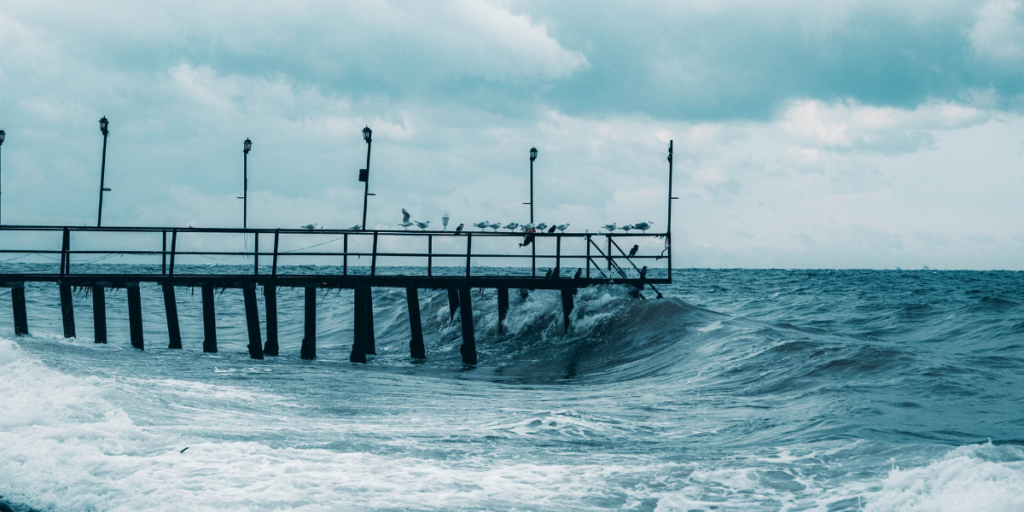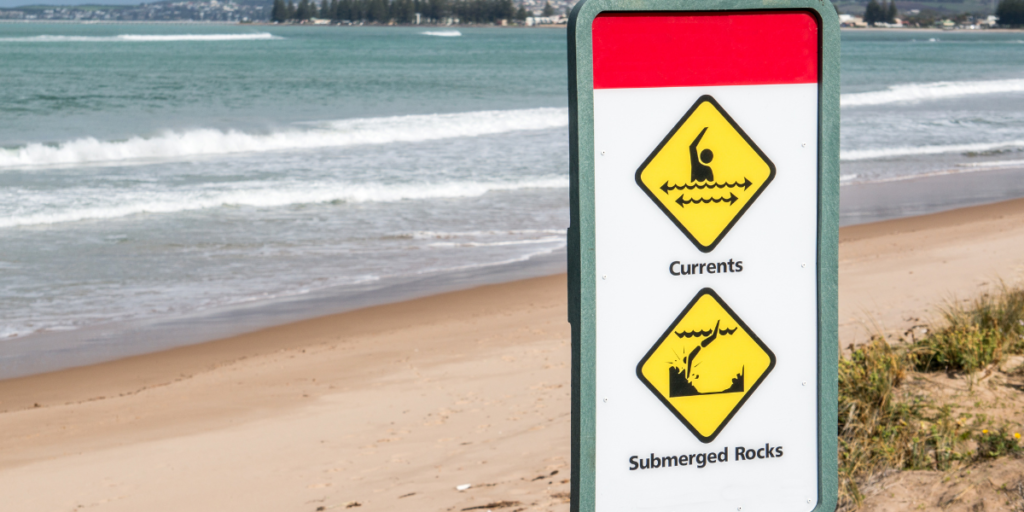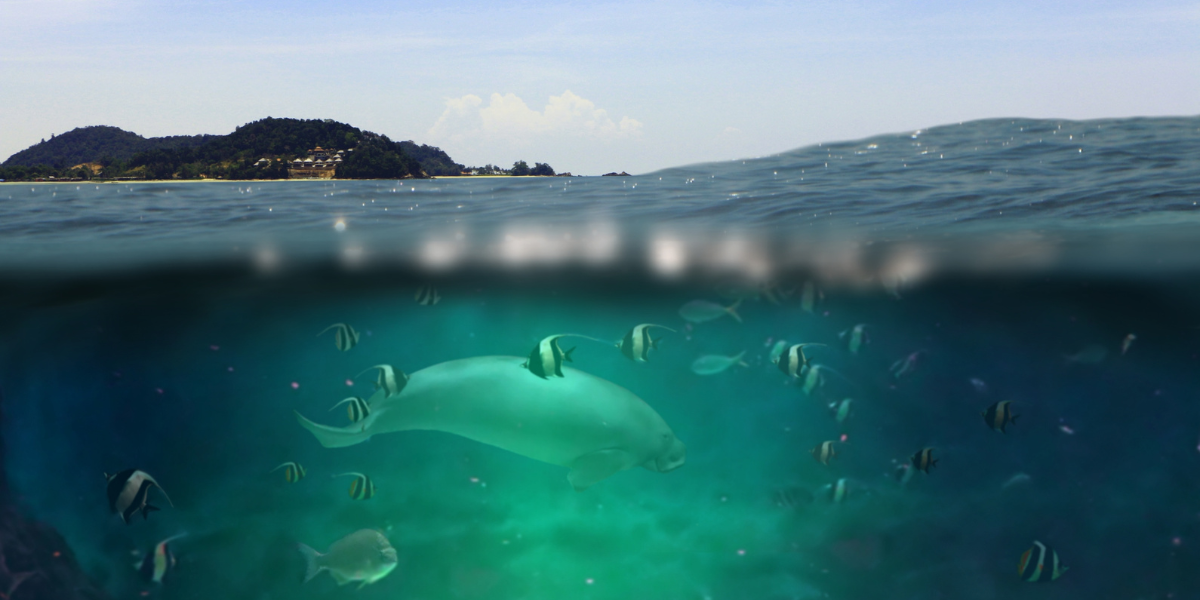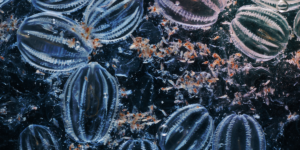Exploring the Impact of Ocean Currents, Waves, and Tides on Marine Life
You may not realize it, but the ocean is constantly in motion. The currents, waves, and tides that make up this movement have a profound impact on marine life. From tiny plankton to massive whales, every creature in the ocean has developed unique adaptations to survive in their dynamic environment.
Ocean currents are like rivers flowing through the sea, carrying nutrients and heat around the world.
Waves are created by wind sweeping across the surface of the water and can travel thousands of miles before crashing onto shorelines.
Tides are caused by gravitational forces from both the moon and sun and can reach heights of over 50 feet in certain parts of the world.
All of these ocean movements play an important role in shaping marine ecosystems and influencing how creatures live their lives.
In this article, we will explore how currents, waves, and tides affect marine life and what adaptations animals have made to survive in these challenging conditions.
Key Takeaways
- Ocean currents play a vital role in distributing nutrients and heat, regulating Earth’s climate and impacting weather patterns, which affects marine life.
- Waves are created by wind and can travel long distances, and their dynamics can be complex and impact marine life, including their size and shape.
- Tidal ecosystems provide diverse habitats for various species, and marine creatures have adapted to move with the ebb and flow of the ocean.
- Human activities such as overfishing, pollution, and oil spills have significant impacts on ocean movements, which disrupt food webs and threaten the survival of marine life. Immediate action is needed to mitigate these harmful effects and preserve our planet’s diversity.
Understanding the Basics of Ocean Currents
You’ll want to know that understanding ocean currents is key to comprehending how they affect marine life! Ocean currents are large and continuous movements of seawater, driven by various factors like wind, temperature, and salinity. They have a significant impact on climate and weather patterns around the world.
Ocean currents play an essential role in regulating Earth’s climate by distributing heat from the equator to the poles. This process helps maintain a balance of temperatures across different regions of the planet.
Changes in ocean currents can also lead to shifts in weather patterns, such as changes in precipitation levels or droughts. The variability of ocean currents can thus have far-reaching implications for both human societies and marine ecosystems alike.

The Science Behind Waves
Understanding the mechanics of how waves form and travel through the ocean is key to comprehending their impact on the world’s coastal regions.
Waves are created by wind blowing over the surface of the ocean, generating ripples that merge and grow into larger waves. These waves then travel across vast distances, picking up energy along the way from other sources such as storms or earthquakes.
Wave dynamics can be complex, with many factors affecting their size and shape. Ocean wave models use mathematical equations to predict wave behavior based on parameters such as wind speed, water depth, and temperature.
This information is essential for understanding how waves affect marine life, as well as for predicting potential hazards such as storm surges or tsunamis. The science behind waves is fascinating and constantly evolving, providing new insights into how these powerful forces shape our planet’s coastlines.
Tides and Their Effects on Marine Life
As we delve into the fascinating world of tides, it’s important to note how they impact the ecosystem of our oceans. Tidal ecosystems are an essential part of marine life, providing a diverse range of habitats for various species.
The tidal zone, which is the area between high and low tide marks, is especially crucial as it undergoes frequent changes due to tides. The adaptations in tidal zones are absolutely necessary for marine life to survive.
For example, some organisms have developed suction cups or adhesive pads on their bodies to prevent being washed away by strong currents during high tide. Others have adapted by developing hard shells or thick skin to protect themselves from predators during low tide when they are exposed on shorelines.
The ability of marine life to adapt and thrive in these constantly changing environments is truly remarkable and highlights the importance of understanding how tides shape our oceans’ ecosystems.
Adaptations of Marine Life to Ocean Movements
Marine creatures have evolved to move gracefully with the ebb and flow of the ocean, twisting and turning like acrobats in a watery circus. To survive in such an environment, marine life has developed specific adaptations that enable them to thrive amidst ocean movements. Here are some examples:
- Camouflage tactics: Many marine organisms have evolved remarkable camouflage skills that allow them to blend seamlessly into their surroundings. For instance, certain species of octopuses can change their skin color and texture to match the colors and patterns of rocks or sand on which they rest.
- Hydrodynamics: Marine animals have adapted their bodies to reduce drag, allowing them to move efficiently through water currents. Some species boast streamlined bodies while others have shapes that create lift for better maneuverability.
- Symbiotic relationships: Certain species of fish depend on other sea creatures such as sea anemones or crabs for protection from predators or access to food sources.
- Sensory adaptations: Marine organisms have also developed specialized senses that help them navigate in turbulent waters. For instance, sharks use electroreception – detecting electric fields produced by prey – while dolphins rely on echolocation – bouncing sound waves off objects – for locating prey.
Overall, marine life has proven incredibly resilient in adapting to the constantly changing conditions of ocean movements thanks to these and many other strategies that allow them not only to survive but thrive in this challenging environment.

Human Impact on Ocean Movements
Our careless actions are causing irreparable harm to the ocean’s delicate ecosystem, impacting everything from weather patterns to the survival of countless species.
Human activities have significantly altered ocean movements through overfishing and pollution. Overfishing has not only depleted fish stocks but has also disrupted food webs, affecting the entire marine food chain. This has significant implications for marine life that depends on a balanced ecosystem where each organism serves a crucial role.
Pollution is another major contributor to changes in ocean movements. Human-generated waste such as plastics, chemicals, and oil spills pose a significant threat to marine life and their habitats. The accumulation of plastic debris in the oceans poses a significant risk to species that mistake them for food or get entangled in them.
Chemical pollutants such as pesticides, fertilizers, and other toxic substances find their way into the oceans through runoff from agricultural fields and industrial processes. These pollutants can adversely affect marine life by disrupting reproductive cycles, compromising immune systems, and even causing death.
It’s essential that we take immediate action to mitigate these harmful effects if we hope to preserve our planet’s rich biodiversity and ensure healthy oceans for generations to come.
Frequently Asked Questions
How do ocean currents, waves, and tides affect the migration patterns of marine animals?
Did you know that 90% of marine animal behavior is influenced by environmental factors? Ocean currents, waves, and tides play a crucial role in shaping migration patterns. Scientific data underscores the importance of these factors for marine life survival.
Can changes in ocean currents, waves, and tides impact the breeding habits of marine creatures?
Changes in ocean currents, waves, and tides can impact the breeding success and reproductive behavior of marine creatures. For example, altered water temperatures can affect spawning timing and larval development. Understanding these relationships is crucial for successful conservation efforts.
Are certain types of marine life more affected by ocean movements than others?
Marine life susceptibility to ocean movements varies. Some species have adaptation strategies, while others struggle. Like a ship navigating rough waters, some creatures thrive in turbulence, while others sink. Understanding these dynamics is crucial for conservation efforts.
Is there a correlation between climate change and changes in ocean currents, waves, and tides?
Climate change impacts ocean circulation patterns, leading to changes in currents, waves, and tides. This affects marine ecosystems as migratory species rely on these patterns for feeding and breeding. Join the effort to reduce carbon emissions and mitigate these effects.
How do ocean movements impact the distribution of nutrients and food sources for marine life?
Oh, you want to know how ocean movements impact nutrient cycling and food sources for marine life? Well, let me break it down for you using scientific jargon and trophic cascades. Get ready to belong to the nerd club.
Conclusion
You’ve now gained a deeper understanding of how ocean currents, waves, and tides affect marine life. The basic science behind these movements can help explain why some marine species thrive in specific areas while others struggle to survive.
Waves provide energy for the movement of nutrients and organisms throughout the ocean, while tides play a crucial role in shaping coastal ecosystems.
Marine life has adapted to these ocean movements in remarkable ways, from using currents as transportation to creating structures that withstand powerful waves. However, human impact on ocean movements through pollution and climate change threatens the delicate balance of these ecosystems.
Just like a ship sailing through rough waters, we must navigate our impact on the ocean with caution if we hope to preserve its diverse array of life.




